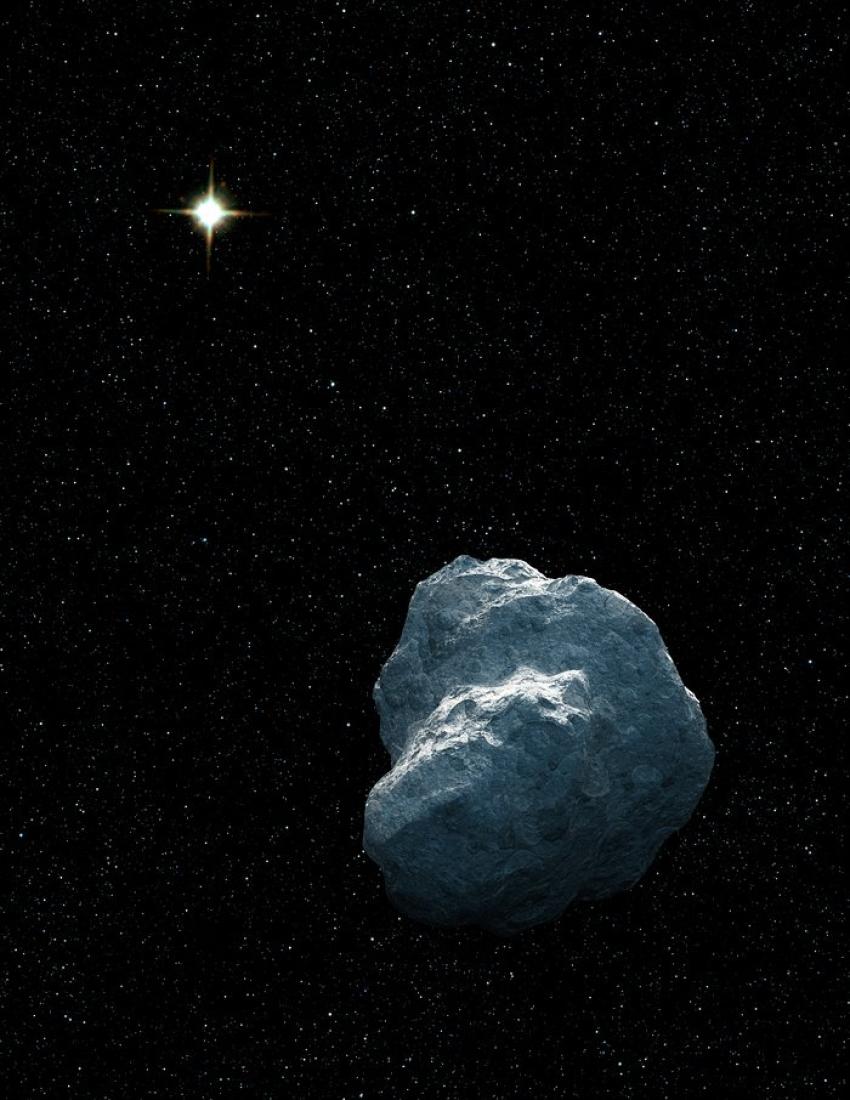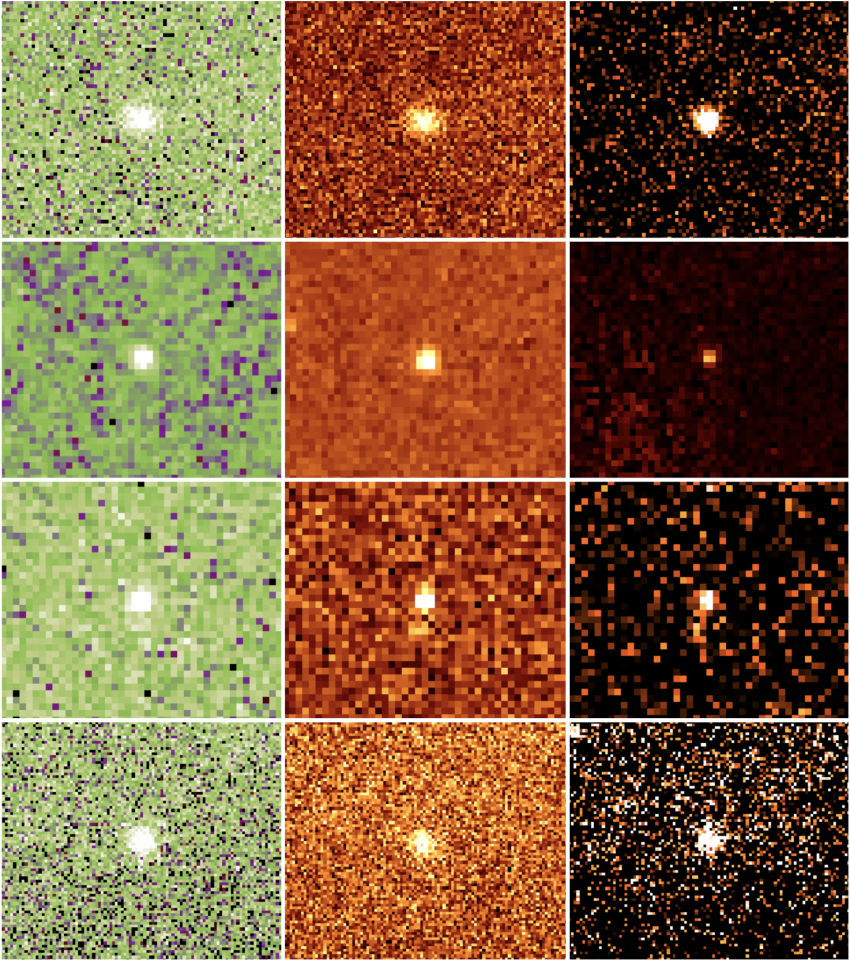Asteroids sharing their orbits with the planet Neptune have been observed to exist in a broad spectrum of red colour, implying the existence of two populations of asteroids in the region, according to a new study by an international team of researchers. The research is published in the journal Monthly Notices of the Royal Astronomical Society: Letters.
The team of scientists from the USA, California, France, the Netherlands, Chile and Hawaii observed 18 asteroids sharing the orbit of Neptune, known as Neptunian Trojans. They are between 50 and 100 km in size and are located at a distance of around 4.5 billion kilometres from the Sun. Asteroids orbiting this far away are faint and so are challenging for astronomers to study. Before the new work, only about a dozen Neptunian Trojans had been studied, requiring the use of some of the largest telescopes on Earth.
The new data were gathered over the course of two years using the WASP wide field camera on the Palomar Observatory telescope in California, the GMOS cameras on the Gemini North and South telescopes in Hawaii and Chile, and the LRIS camera on the Keck Telescope in Hawaii.
Of the 18 observed Neptunian Trojans, several were much redder than most asteroids, and compared with other asteroids in this group looked at in previous studies. Redder asteroids are expected to have formed much further from the Sun; one population of these is known as the Cold Classical trans-Neptunian objects found beyond the orbit of Pluto, at around 6 billion kilometres from the Sun. The newly observed Neptunian Trojans are also unlike asteroids located in the orbit of Jupiter, which are typically more neutral in colour.
The redness of the asteroids implies that they contain a higher proportion of more volatile ices such as ammonia and methanol. These are extremely sensitive to heat, and can rapidly transform into gas if the temperature rises, so are more stable at large distances from the Sun.
The location of the asteroids at the same orbital distance as Neptune also implies that they are stable on timescales comparable to the age of the Solar System. They effectively act as a time-capsule, recording the initial conditions of the Solar System.
The presence of redder asteroids among the Neptunian Trojans suggests the existence of a transition zone between more neutral coloured and redder objects. The redder Neptunian asteroids may have formed beyond this transition boundary before being captured into the orbit of Neptune. The Neptunian Trojans would have been captured into the same orbit as the planet Neptune as the ice giant planet migrated from the inner solar system to where it is now, some 4.5 billion kilometres from the Sun.
Lead author Dr Bryce Bolin of the NASA Goddard Space Flight Centre said, “In our new work we have more than doubled the sample of Neptunian Trojans studied with large telescopes. It’s exciting to find the first evidence of redder asteroids in this group.”
“Because we have a larger sample of Neptunian Trojans with measured colours, we can now start to see major differences between asteroid groups. Our observations also show that the Neptunian Trojans are also different in colour compared to asteroid groups even further from the Sun. A possible explanation may be that the processing of the surfaces of asteroids by the Sun’s heat may have different effects for asteroids at varying solar distances.”
Media Contacts
Gurjeet Kahlon
Royal Astronomical Society
Mob: +44 (0)7802 877 700
press@ras.ac.uk
Dr Robert Massey
Royal Astronomical Society
Mob: +44 (0)7802 877699
press@ras.ac.uk
Science Contacts
Dr Bryce Bolin
NASA Goddard Space Flight Centre
bolin.astro@gmail.com
Dr Ian Wong
NASA Goddard Space Flight Centre
ian.wong@nasa.gov
Further information
The research appears in 'Keck, gemini, and palomar 200-inch visible photometry of red and very-red neptunian trojans', Bolin et al., Monthly Notices of the Royal Astronomical Society:Letters, in press.
Notes for Editors
The Royal Astronomical Society (RAS), founded in 1820, encourages and promotes the study of astronomy, solar-system science, geophysics and closely related branches of science. The RAS organises scientific meetings, publishes international research and review journals, recognises outstanding achievements by the award of medals and prizes, maintains an extensive library, supports education through grants and outreach activities and represents UK astronomy nationally and internationally. Its more than 4,000 members (Fellows), a third based overseas, include scientific researchers in universities, observatories and laboratories as well as historians of astronomy and others.
All submissions to RAS journals undergo peer review, and their suitability for publication is assessed by appropriate specialist subject editors. The Society issues press releases based on a similar principle, but the organisations and scientists concerned have overall responsibility for their content.
Keep up with the RAS on Twitter, Facebook, Instagram, LinkedIn, and YouTube.



